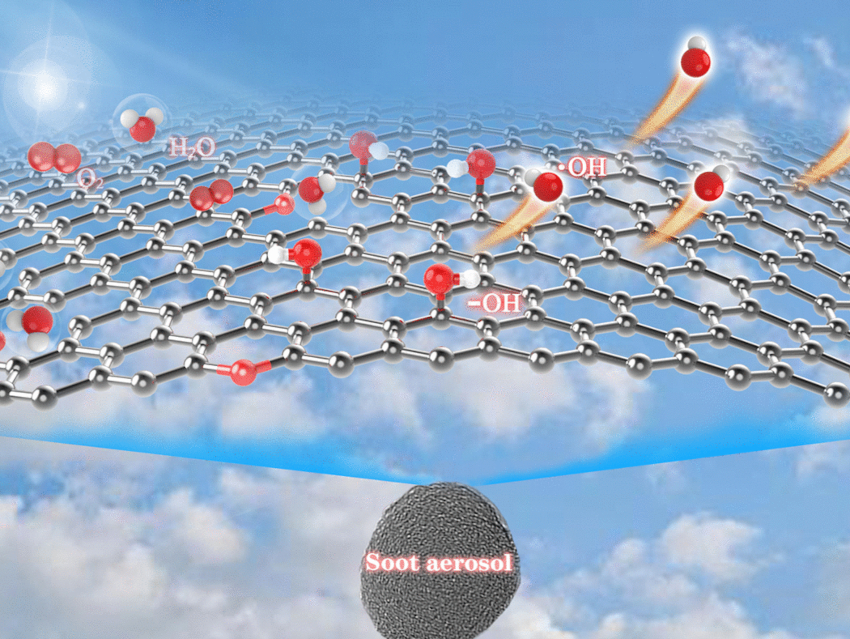Haze is formed when a cocktail of various gaseous pollutants is oxidized and forms particulate matter diffusing sunlight. This process is mainly mediated by hydroxyl radicals (OH·).
Xiao Cheng Zeng, University of Nebraska-Lincoln, USA, Joseph S. Francisco, University of Pennsylvania, Philadelphia, USA, Hong He, Research Center for Eco-Environmental Sciences, Chinese Academy of Sciences, Beijing, Institute of Urban Environment, Chinese Academy of Sciences, Xiamen, and University of the Chinese Academy of Sciences, Beijing, and colleagues have discovered a new route to their formation. The discovered radical-building mechanism could also offer new perspectives for air purification and the energy industry.
Haze-Building Hydroxyl Radicals
Haze consists of fine particulate matter containing soot. It is formed when gaseous pollutants, which are from industrial emissions, vehicle exhausts, and other sources, are converted to condensable matter. “This condensation is remarkably accelerated under the action of OH radicals,” says Joseph S. Francisco.
The commonly known sources for OH· radicals, such as nitrogen oxide and ozone, only partly account for the vast haze events which keep occurring in haze-afflicted regions such as the megacities of East and South Asia. The team has taken a closer look at the chemical activity of soot particles. Soot originates from diesel engine exhaust fumes or is spread by slash-and-burn practices or forest fires. However, to date, soot particles consisting of uncombusted carbon have been considered more as a sink of hydroxyl radicals, rather than a source.
Soot as a Surprising Radical Source
The team’s experiments showed that soot particles can produce OH· radicals if air and water vapor are blown over the particles while being irradiated with light. It was expected that hydroxyl species formed in this process would not leave the surface of the soot and would quickly react again. However, energy calculations showed that the hydroxyl exhibited “roaming-like features”, as the team stated it: They migrated over the surface, ultimately leaving it.
The results of the study led the researchers to the conclusion that soot particles play an active role in smog formation. However, the team is not stopping there: Since it seems that light radiation is sufficient to decompose water molecules into radicals, this material could potentially be used to develop metal-free carbocatalysts. Such soot-based catalysts could either help purify the air from pollutants such as nitrogen oxide and volatile organic compounds (VOCs), or they could be used to generate chemical energy from light energy. This could pave the way for an environmentally friendly form of artificial photosynthesis.
- Generation and Release of OH Radicals from the Reaction of H2O with O2 over Soot,
Guangzhi He, Jinzhu Ma, Biwu Chu, Renzhi Hu, Hao Li, Meng Gao, Yuan Liu, Yonghong Wang, Qingxin Ma, Pinhua Xie, Guoxian Zhang, Xiao Cheng Zeng, Joseph S. Francisco, Hong He,
Angew. Chem. Int. Ed. 2022.
https://doi.org/10.1002/anie.202201638




